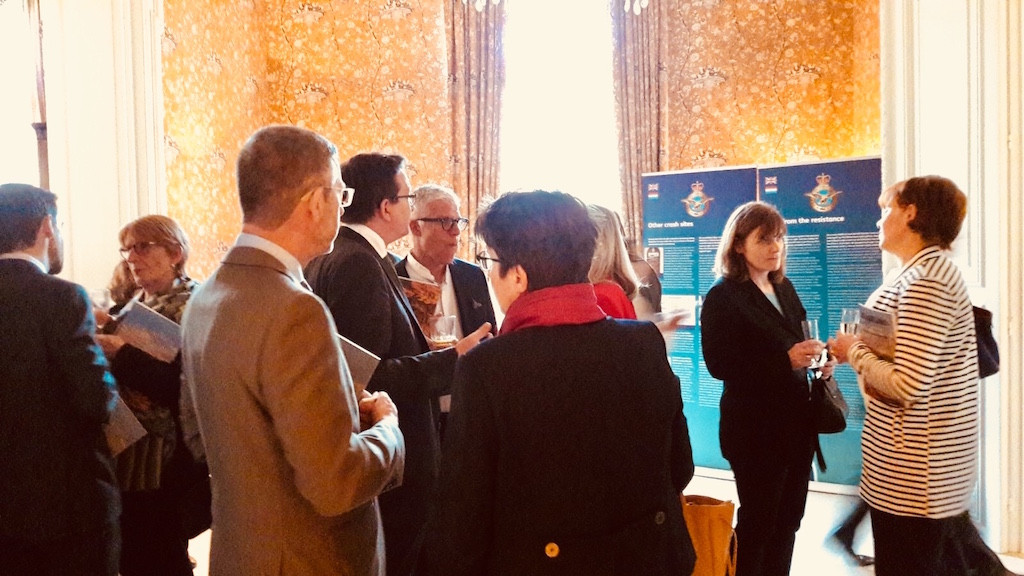JB: Ambassador Marshall, you began tweeting about historical, cultural, economic and community links in September 2016 under the hashtag #LuxUKLinks. What prompted you to do this and did it have anything to do with the Brexit referendum?
JM: I have always been interested in the history of the countries in which I have worked and specifically I suppose in the interconnections between British history and the country in which I was living. So, in my previous posting in Senegal I spent a lot of my spare time researching links between Britain and Senegal and I wrote what can perhaps best be described as a narrative history of British involvement in Senegal. That is an unfinished and unpublished project which I must return to one day!
But, from the time I knew I would be posted to Luxembourg, I took a similar interest in researching the links between Luxembourg and the UK. And I discovered that while the UK’s relationship with Luxembourg has not been as intense or complex as Luxembourg’s relationships with its neighbours, nevertheless there are many fascinating links which have existed over the centuries, or which are there today.
So, as I began discovering these links for myself I began sharing them on Twitter, using the hashtag #LuxUKLinks. I started, as you say, in September 2016 and am still tweeting links, currently at the rate of about one per week. So far, I have tweeted 109 links. So this, rather than the referendum, was what made me start this project. But if it helps in the context of Brexit to remind people, whether British or Luxembourgers, of the links between our countries, links that will evolve and endure in the future, and which will be supplemented by new connections, relationships and contacts--then that can only be a good thing,
JB: How did the initiative evolve to become an exhibition and now a book?
JM: I have an audience on Twitter but it is a limited one. As people said to me how much they liked the idea I decided to try and reach new audiences by producing an exhibition. This we did, over 23 pull-up banners, which featured 60 links. We launched that in May last year in the presence of Prime Minister Xavier Bettel. Since then it has been on tour, and has been shown in several communes and schools around the country, as well as a couple of museums--it was at the Dräi Eechelen Museum for example for Museum Night--as well as having been on show in the margins of other events we have organised, or in which we have participated.
In total, it has been on show at 26 venues/events over the last year. And in April it was shipped off to the UK where it will be on show at the Centre of Luxembourg Studies at the University of Sheffield and at the Luxembourg Embassy and the Foreign and Commonwealth Office in London. A number of people then suggested to me that we produce a book.
JB: What kind of response did you receive from the public to the tweets and exhibition, which is fairly well travelled already?
JM: We have had a really good response. Schools, such as the Lycée Classique de Diekirch, Lycée Lënster or St George’s International School, have used it for pedagogical purposes in different ways. I have attended a number of vernissages in different communes, and the people I meet there are often delighted to share their own links with the UK, or to draw my attention to links not covered in the exhibition. Some of these have featured in later tweets or in the book.
I gave a talk on #LuxUKLinks at the British Chamber of Commerce Christmas lunch and that seemed to go down pretty well. A few of the links are obviously well-known, but many of the links they were hearing about for the first time. I like to say there is something for everyone in the exhibition because while there is a lot of history we also celebrate the contemporary links, and we mix serious topics with more light-hearted ones. So, the exhibition covers everything from Joan of Arc to Harry Potter, and from the First World War to the Beatles.
JB: What for you were the most interesting links you've uncovered?
JM: Difficult to choose. But, I do like the fact that the three wonderful viaducts built in the late 1850s/early 1860s that span Luxembourg City were built by a British company. That is why I have chosen the famous image by Nicolas Liez, that shows the railway viaduct at Clausen for the cover of the book. And I like the fact that Luxembourg’s very first scheduled international air services were from an airfield at Esch-sur-Alzette to Croydon airport, near London.
And I like the fact that it was young Luxembourgers, forcibly conscripted into the German Army, who enabled the news to get to British Intelligence that the Germans were developing V1/V2 bombs at Peenemunde on the Baltic coast. As a result, the RAF knew to bomb Peenemunde. This didn’t stop the programme, but it did delay it a few months, thereby saving presumably countless lives.
JB: Why did you feel it was important to make a book about these links? And how can the book be purchased?
JM: A book has the advantage that it brings all the information in the exhibition into a more permanent and accessible place. Jean-Claude Muller, of the Friends of Luxembourg History Association volunteered his support so we worked together to produce the book which covers a total of 75 links, 15 more than the exhibition. It is available in the Ernster store near Place Clairefontaine as well as in their All English Bookstore around the corner on Rue de la Reine.
The Lux-UKLinks book costs €10 and all with all proceeds go to the Friends of Luxembourg History Association.
